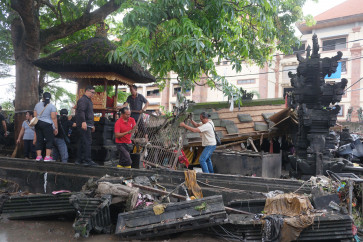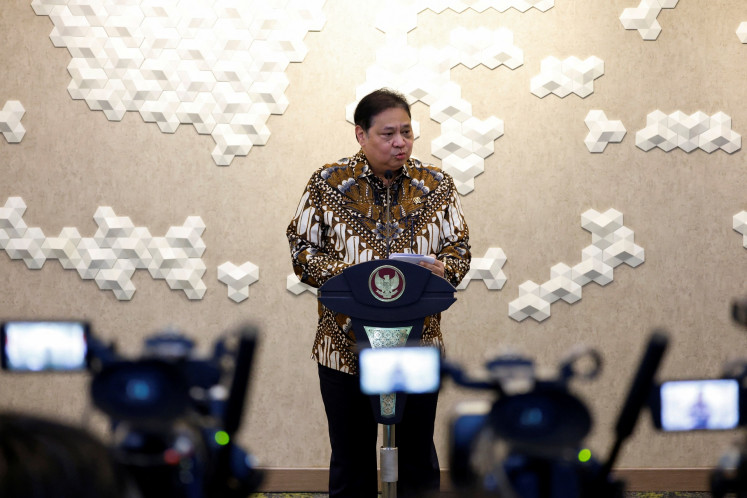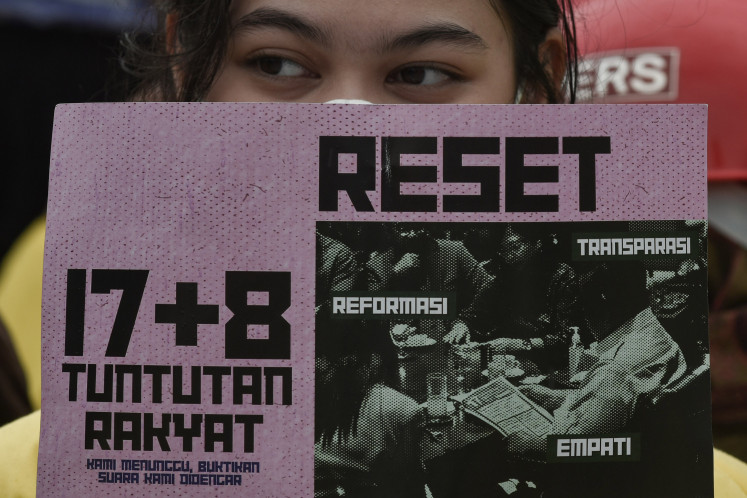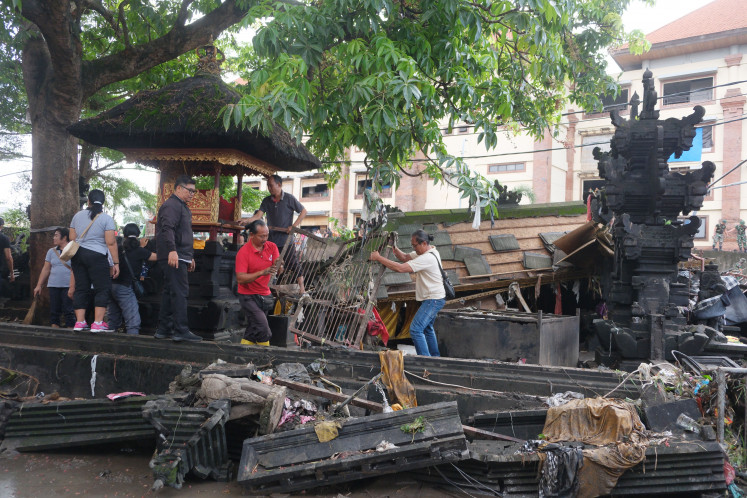Popular Reads
Top Results
Can't find what you're looking for?
View all search resultsPopular Reads
Top Results
Can't find what you're looking for?
View all search resultsIwan Darmawan: Pioneering conservation in Lampung
A primary school dropout with a murky past should not necessarily feel dejected and useless to others
Change text size
Gift Premium Articles
to Anyone
A primary school dropout with a murky past should not necessarily feel dejected and useless to others.
The proof is Iwan Darmawan, 36, a former Jakarta hoodlum who is now helping a village in Central Lampung preserve the environment.
JP/Oyos Saroso H.N.
Iwan Darmawan has not only reformed his character, but has also inspired fellow villagers in Sendang Asih, Sendang Agung district, Central Lampung regency, to conserve a forest in the village, Register 22 Way Waya.
A reservoir measuring 60 by 120 meters now gets its water from Register 22 Way Waya, a 6,000-hectare forest surrounding Sendang Asih village. Since the end of the 1990s, Iwan has strived to save Lake Sendang Asih. Thanks to his perseverance local farmers can now irrigate their paddy fields in the dry season, and have three paddy harvests a year.
“As the forest is well-protected, the reservoir will be enough to irrigate paddy fields. We need only to channel the water to farmers for their crops,” said Iwan. He said that as a volunteer he received no pay from the government or paddy field owners. “Sometimes during harvest season farmers thank me and give me some unhusked rice,” he added.
Iwan gained the support of the village to save the forest by teaching villagers about the importance of a wooded zone until they were ready to undertake conservation. “I’ve always told them that the forest around their village is a very valuable source of livelihood at present and in the future,” he said.
His hard work prompted Heifer International and NGOs in Lampung province to employ the father of four as a community facilitator in the village. The Central Lampung Forestry Office also employes Iwan as a forest rescue volunteer, who provides guidance and promotes conservation support groups.
Iwan’s resolute efforts have led to the establishment of several Forest Protection Farmers Groups (KTPHK) in Sendang Asih. While engaged in forest conservation, members of the groups also learn how to utilize products from the forest without causing damage under the Community Forest (HKm) program.
In HKm zones villagers grow non-timber trees (not to be felled for timber) and maintain plantations that include banana trees and vegetables. Non-timber trees in the HKm area of Register 22 Way Waya grow amid durian, pinang (areca nut), petai (pungent bean) and aren (sugar palm) trees.
Locals have also learned how to start home industries by making banana chips, honey, palm sugar and melinjo (fruit) chips. “Along with KPTKH, I also teach them how to make melinjo and banana chips. Now we’re building a simple library to promote the reading habits of village youngsters,” Iwan said.
Iwan’s diligence aroused the attention of the Lampung provincial administration, which granted him an award for his pioneering village environmental conservation efforts in 2008. In the same year, Iwan also received an award from the Forestry Ministry for his efforts to preserve the environment.
In addition, Iwan has boosted the villagers’ spirit of mutual assistance by organizing groups of arisan rumah, in which people contribute to and take turns at winning a pot of money, in this case for house repairs. Iwan coordinates the gatherings in the village.
He previously proposed renovating homes that were still made of wood or bamboo and that had earth floors. “Now over a dozen villagers can afford to build permanent houses that meet health requirements. My home is one of those renovated through this activity,” said Iwan.
According to Iwan, it’s not only the possession of healthy homes by the poor that matters. “The most important thing is the preservation of mutual assistance among villagers. If local people live in harmony and help each other, hopefully our village will be rid of poverty, which is even more so as we’ve been able to utilize the products of the forest we’re conserving,” Iwan added.










